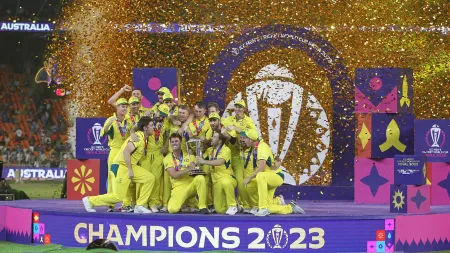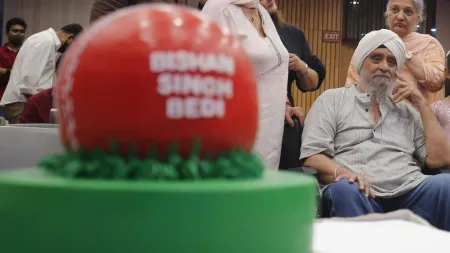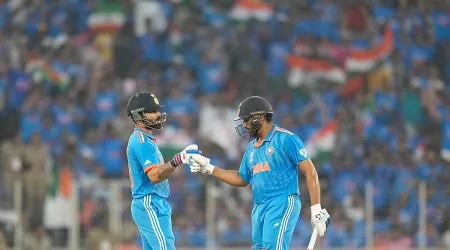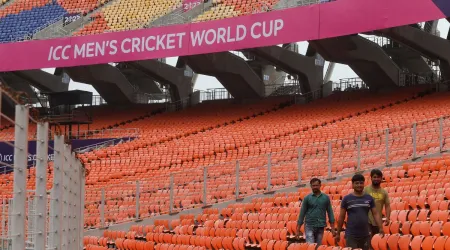- India
- International
Hockey World Cup 2018: Every day a field day in Odisha’s Sundargarh district
From Dilip Tirkey to nearly 50 others, including members of the squad that left a mark in the ongoing World Cup, players have emerged from grounds of Sundargarh.
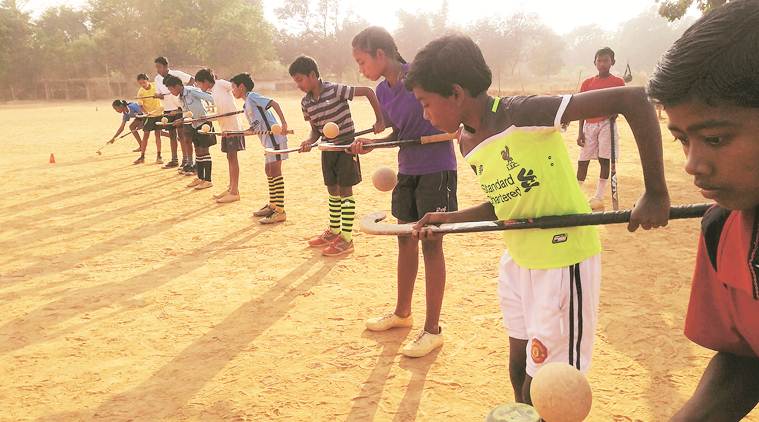 Trainees sweat it out on a dry and dusty hockey field at Rajgangpur as coach Sunil Tigga, an ex-Armyman who trains them for free, keeps a close watch.
Trainees sweat it out on a dry and dusty hockey field at Rajgangpur as coach Sunil Tigga, an ex-Armyman who trains them for free, keeps a close watch.
AS ODISHA hosts its first men’s hockey World Cup, with an infrastructure upgrade of Rs 82 crore and a huge media push, 300-odd km away, in the cradle of Indian hockey, they pray that the scheduled one-hour power cut in the region won’t coincide with the 7 pm match.
Located in the heart of the Maoist Red Corridor, covered technically under the 5th Schedule of the Constitution for its high tribal population and its poor development indices (residents complain the benefits of the Schedule don’t reach them), Sundargarh district of Odisha lives, breathes and weds for hockey. Marriages are struck here depending on if the bride or groom plays hockey.
Every evening, on dusty grounds that are a far cry from the astroturfs on which the sport is played these days, barefeet girls and boys holding sticks that are nearly three-fourth their size gather to play and learn. Their No. 1 idol remains former India captain Dilip Tirkey of village Saunamara, who has the highest number of international caps (412) in the country and is now a Rajya Sabha MP. But there have been many more in Tirkey’s wake — over 50 international players apart from countless national-level ones. The 2016 Junior World Cup winning vice-captain, Dispan Tirkey, is a resident of Saunamara too, as are two defenders in the current World Cup squad, Amit Rohidas and Birendra Lakra.
As hockey, once popularly referred to as India’s national sport because of the country’s predominance in it, disappears from urban spaces, to be sustained largely by its rural strongholds, Sundargarh is now one of its foremost cradles, turning out players by the assembly line. Not too far away, players of repute have also emerged from two other Odisha districts, Sambalpur and Deogarh.
Hockey thrives in Sundargarh despite limited resources and India’s fluctuating fortunes in the sport. Barring this edition, India has finished more or less at the bottom half of the table at World Cups. When they entered the quarter-final stage last week, it was the first time since 1975.

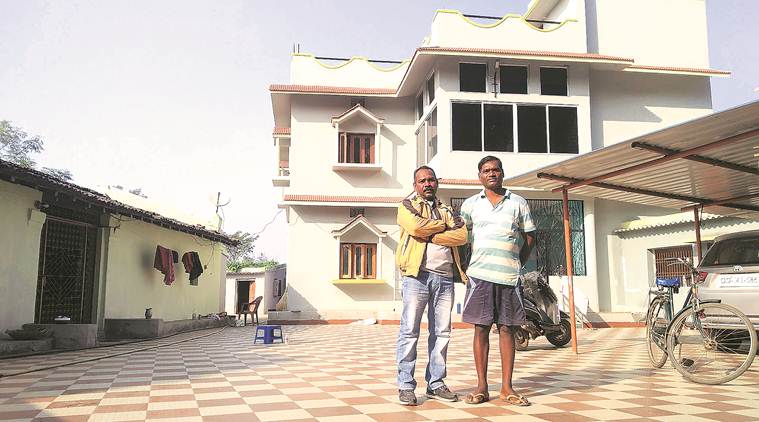 India international Sunita Lakra’s uncle with a friend outside the new family home at Rajgangpur. For many, hockey is the way to prosperity
India international Sunita Lakra’s uncle with a friend outside the new family home at Rajgangpur. For many, hockey is the way to prosperity
“You go to any household in Sundargarh, you’ll find at least one hockey player who has played at some age-level tournament. The sport comes naturally to youngsters here,” says Pankhracius Tirkey, father of India international Dipsan Tirkey.
Dipsan learnt playing on the rocky field in Saunamara village, that has not a trace of grass. “We call it a field but it’s just a piece of land which we levelled ourselves,” says Pankhracius, adding that he himself played here once along with Dilip when both of them studied at the primary mission school opposite the field.
Although there is no documentary evidence, locals believe European Christian missionaries introduced the sport to the tribals of Sundargarh as early as the mid-19th century, with inter-village matches conducted to foster brotherhood.
Bijay Lakra, an Odisha state coach for over 25 years, says these matches gave birth to “khasi tournaments”, where the prize was a khasi (goat). “The tribals fell in love with the sport and made it their own. While we were growing up, we did not have phones or television and our main source of entertainment was hockey. We did not even have proper sticks and would make do with bamboo sticks and fruits for balls. Now every kid has a stick at least,” says Lakra.
In tournaments held throughout the year in Sundargarh, mutton may still figure as prize, apart from anything from a cock to a pig, with the names kept after the prize on offer. “Murga (cock) Cup, Suar (pig) Cup, Khasi Cup… all your India starts, including my son Dipsan, have played in these tournaments. Playing for India happens later, first you need to prove your mettle here,” says Pankhracius.
The tournaments go on for months and all matches are held on weekends. The whole village comes to a standstill during the games. “If anyone has any work in the fields, they complete it early. Nobody misses these games. Our daughter was a regular in these tournaments,” says Laxman, the uncle of India international Sunita Lakra.
“The reason hockey is still thriving here is because of these khasi tournaments,” says Dilip Tirkey. “Rural hockey is the reason why we have produced so much talent. You cannot imagine the passion of the people. In village tournament finals, you have an attendance of close to 3,000-4,000.”
 The first astroturf comes up at Dilip Tirkey’s village Saunamara.
The first astroturf comes up at Dilip Tirkey’s village Saunamara.
Several others though pick up the stick in search of better livelihood. Agriculture is the main source of employment in the region but unreliable rainfall makes life tough for farmers. While Sundargarh is also rich in iron ore, limestone, manganese, dolomite and fire clay, spawning several factories, and now has five colleges, including the National Institute of Technology, Rourkela, playing in the nationals guarantees youngsters a job with the state government or in the public sector.
“In our village (Saunamara), 90 per cent of those employed have received a job through sports quota as they play hockey,” says Lakra.
Lately, players’ lives have also been transferred by the money flowing in from Hockey India League, a professional hockey league inspired by the Indian Premier League and launched in 2012. Acknowledging its benefits for the players, Dilip Tirkey says, “It has also given youngsters exposure of playing against international stars.”
“We lived a small jhonpdi (mud house) and did not own even television. We used to go to Dipsan’s house to watch hockey matches, but now my younger brother is doing well,” says Amit Rohidas’s elder brother Niranjan. Amit has represented both the Kalinga Lancers, who won the Hockey India League in 2017 and Ranchi Rhinos.
The family now lives in a six-room pucca house and has a solar inverter to ensure power cuts don’t interrupt their hockey viewing. They also own two cars, an SUV, and a pick-up truck for the family tent house business. “It’s all Amit’s money,” Niranjan says.
A stone’s throw away, Dipsan’s father is overseeing the construction of the new family house. It’s been almost a year since construction began and the house is expected to be ready in a couple of months. “Dipsan got good money in the hockey league and we decided to use it to build a bigger house. Right now, you can’t differentiate the living room from the kitchen,” laughs Dipsan’s father.
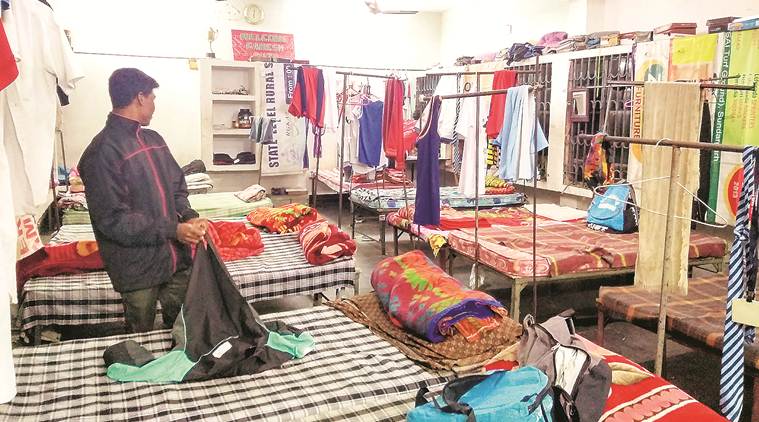 The first big aim of Sundargargh’s aspiring hockey players is making it to government-funded sports academies such as this.
The first big aim of Sundargargh’s aspiring hockey players is making it to government-funded sports academies such as this.
But the distance from the village ground to the hockey field can be impossible to breach for some. Although most children have access to a stick now, many still play without proper shoes. Most have never played even on a grass field before they make it to a sports academy. Sundargarh has four academies, all government-run.
The SAIL Hockey Academy takes in just 32 students while each year in June around 150 turn up for trials. Children between the ages of 14 and 16 are trained for three years and only those who meet high-performance standards are given an extension. The academy attracts players from all across the country, including Manipur and Uttar Pradesh.
SAIL coach Peter Tirkey says, “Most of our children are from Sundargarh, maybe a few from Sambalpur and other states. A lot of children turn up for the trials but we have to turn down most. We have no choice.”
At the Panposh Sports Hostel in Rourkela, credited with producing dozens of India internationals, only state players are admitted. It has capacity for 150 (75 boys and 75 girls). Says Milton Bilung, the head, “Ninety-eight percent of the players are from Sundargarh. We train them until they’re 18 and then they shift to Bhubaneswar.”
At the moment four players at the academy have earned India camp spots.
Says Peter Barla, a sub-junior state player whose career was cut short due to an ankle injury, “If you are older than 15, none of the academies will take you. We have so many children who are extremely talented but the harsh truth is not all will make it.”
Barla now works as a cook at the Saunamara mission school and, during free time, gives free coaching to children.
Coach Lakra believes the primary reason for children excelling in hockey in this region is their natural strength and stamina, with their hunger to move up the ladder a bonus. But technique is another matter.
“The tribal children are extremely strong. You can make them run as much as you want during practice and they will never tire. The others drop their shoulders halfway through practice, but not these children. When Amit came to the academy, he was really strong but did not have good technique and also wasn’t sure what position he wanted to play in,” Lakra points out. He tried him in various positions and even gave him a shot at goalkeeping before suggesting that he become a defender.
Apart from world-class coaching, parents are also keen to put their students in sports academies for free education and accommodation. Sunita’s uncle Laxman recalls dropping her off to Panposh Sports Hostel in Rourkela when she was barely 8, and how she would insist on coming back home each time they visited. “We felt really bad, but my elder brother was a coolie at SAIL and we could not afford to provide her a good education. We hoped that after a stint at the academy, she would get a government job through sports quota. She outdid our expectations,” says Laxman, standing on the porch of their new nine-room house in Rajgangpur town.
The town is also home to other India internationals such as Gloria Dung Dung, Roselin Dung Dung and William William Xalco. But even making it to a sports academy is just half the work done. A maximum of 5 per cent may make the cut from here for the India camp, says coach Peter, with the others settling for a job through sports quota. “It’s a lot of hard work as well as luck,” he adds.
Niranjan recalls those long, uncertain days of waiting. “As a family, the toughest period is when teams are selected. We know that if a player is sidelined for long, he gets demoralised.” He takes heart in the fact that Amit is now a “key” member. “My brother can play deep and move forward whenever required,” Niranjan smiles.
Those children who fail to break free from the ranks end up working in the family fields or move to cities for menial jobs. “A lot of people go to Goa and work on these huge fishing boats. They will all return for Christmas and some will never go back,” says Gourav, a driver.
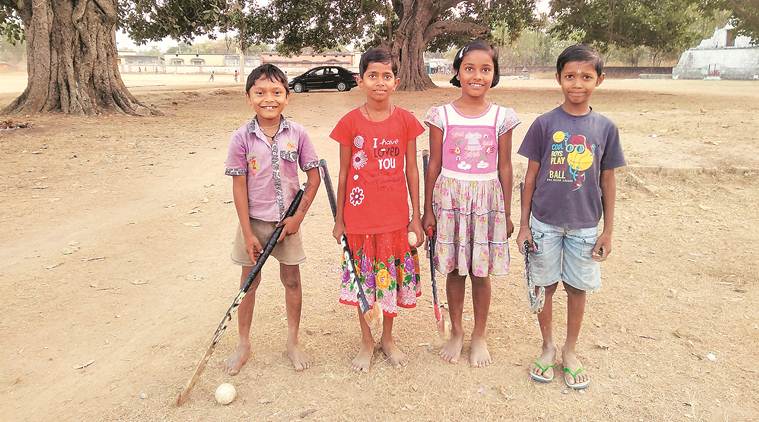 Those children who fail to break free from the ranks end up working in the family fields or move to cities for menial jobs
Those children who fail to break free from the ranks end up working in the family fields or move to cities for menial jobs
For inspiration, they all say they look up to Dilip Tirkey, the 41-year-old former hockey star. Deeply revered, Dilip is always referred to here with the suffix of ‘sir’ or ‘bhaiya’.
Dilip’s journey began watching his father Vincent play for the CRPF team. When Vincent was home during break, he would train the village teams and take young Dilip along with him to the local tournaments. Soon, Dilip was playing in the village field and earned a call to the Sports Authority of India (SAI) hostel in Sundargarh. He went on to become one of the world’s finest defenders in modern-day hockey.
“His style was different. His blocks were unique and gameplay extremely swift. All the defenders at the academy watch his videos and learn,” says Dipsan Kujur, a trainee at the SAI’s Sundargarh centre.
On a pleasant Wednesday evening, at Rajgangpur, barely 50 metres from Gloria Dung Dung’s home, around 180 children dreaming the Dilip dream are receiving hockey training on a huge ground among fields. Sunil Tigga, a former Armyman, is training them. Coaching has been taking place here twice a day, 365 days of the year, for the past three years, and no money is charged from the children, some of whom can’t even afford shoes.
Already, seven children from here have made it to sports academies, and Tigga hopes the government will lay a turf for his trainees. That wish at least may be fulfilled soon. Chief Minister Naveen Patnaik has announced that all the 17 blocks of Sundargarh will have a turf soon. Work has already started on one, in Suanamara. The person supervising is Dilip Tirkey.


















